See the force exerted on a current-carrying wire.
This experiment is included in the Phys 104 College Physics lab about Magnetism.
- Place a wood block between the magnet poles to support the wire. Connect the wires and tap switch to + (red) and – (black) terminals of the LabVolt AC/DC Power Supply. Flip range switch UP (to Range A - 5A position). Use the right hand rule to predict the direction of the force that the current-carrying wire will experience in an external magnet field (up or down). Set knob to around 7 or 8; press tap switch momentarily and see that your prediction was correct. Reverse the direction of the wire (to change the direction of the current) and see that the force is in the opposite direction (down or up).
LDL-D6. Large Horseshoe magnet, chunk of 4×4, long wire and tap switch.
LDL-E6. LabVolt AC/DC power supply
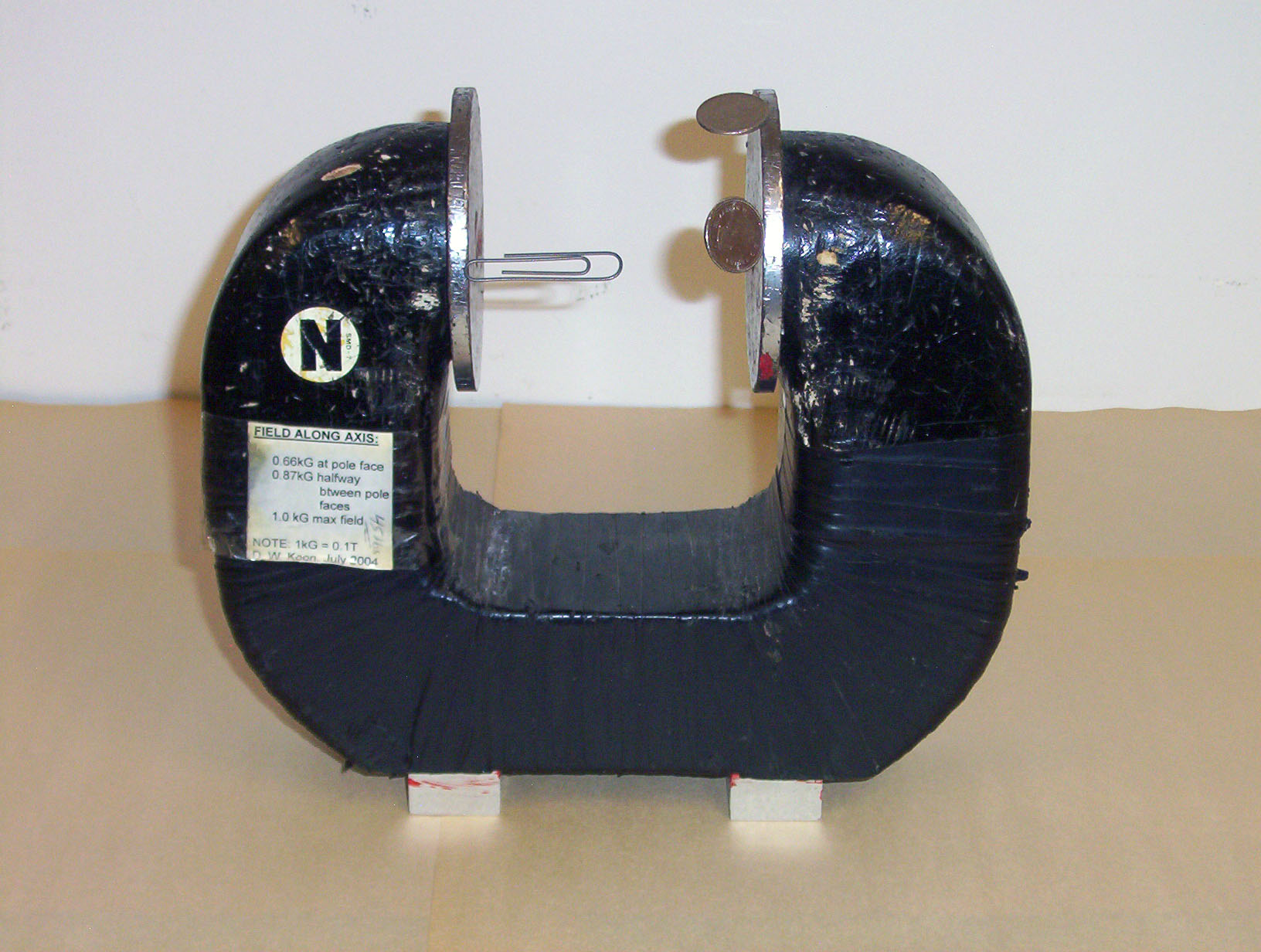
Large horseshoe magnet
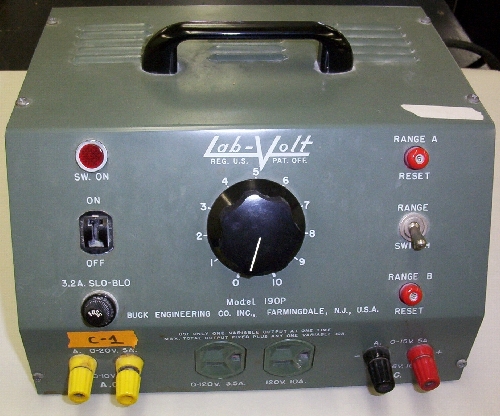
Lab-Volt AC/DC power supply
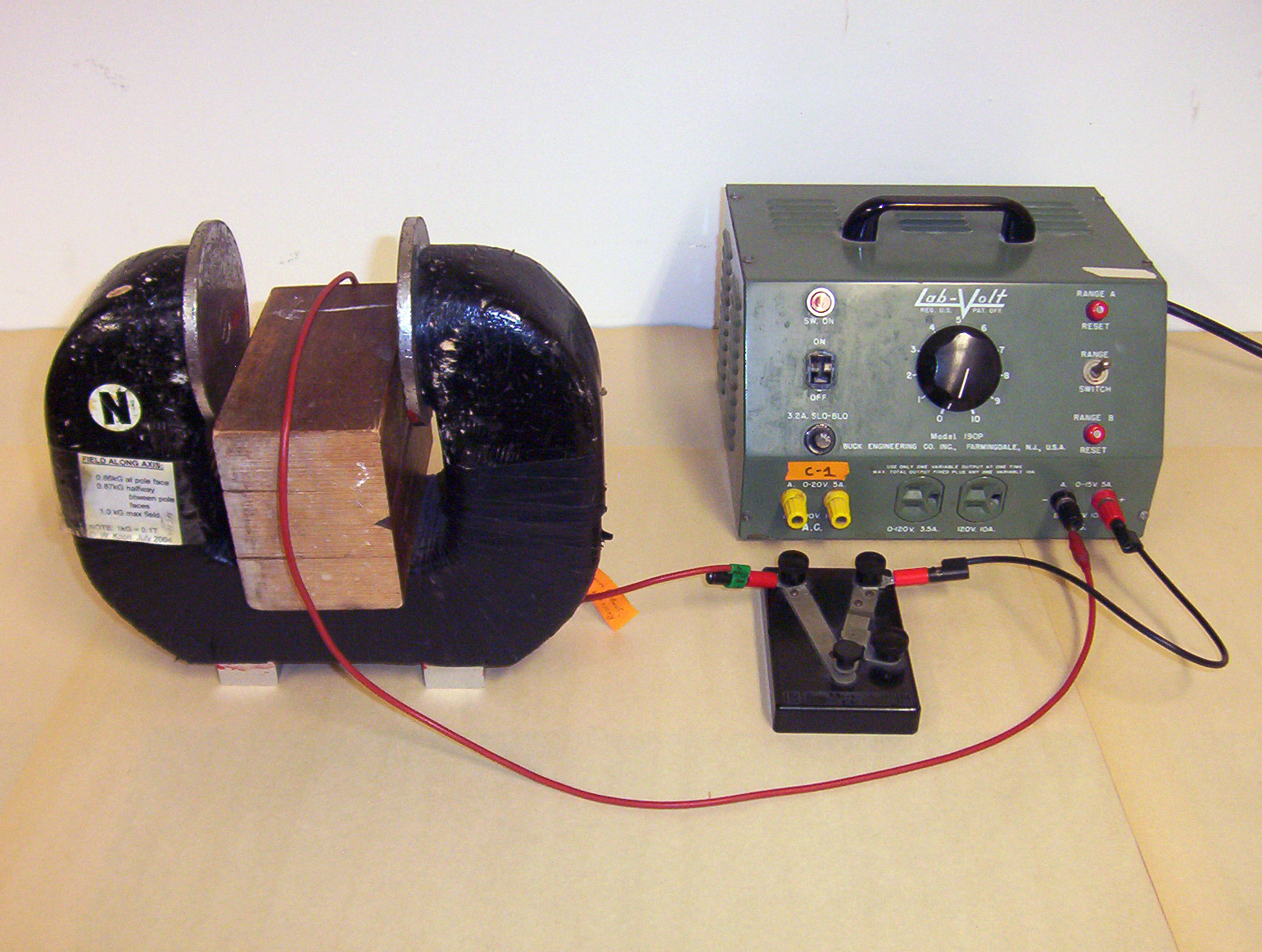
Place block between magnet poles to support the wire. Connect wires and
tap switch to + and – terminals. Flip range switch UP (to Range A - 5A
position). Set knob to around 7 or 8; press tap switch momentarily
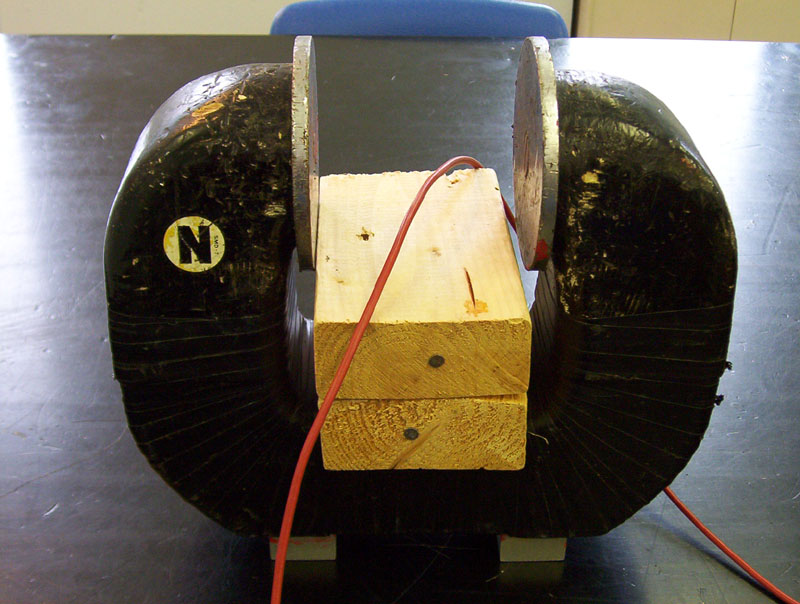
The wire is draped between the magnet poles. The direction of the current with respect to the external B determines the direction of the force on the wire. In the photo above, the wire will jump upward if I is towards you, and will attempt to move downward if I is away from you

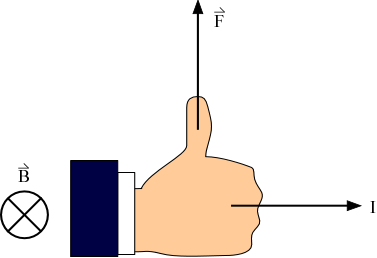
Right-hand rule to predict direction wire jumps.
Use your favorite variation

Right-hand rule to predict direction wire jumps.
Use your favorite variation